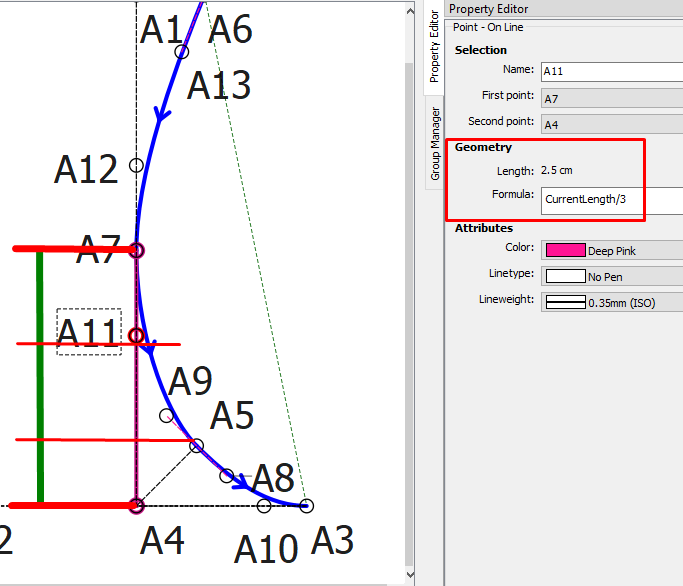Been trying to work on curves again and in the documentation it seems like there is now a tool that does a bezier curve for you? What 4 points are you supposed to pick.
Does this mean that there’s no need to do the length of the line *.55 anymore?
Been trying to work on curves again and in the documentation it seems like there is now a tool that does a bezier curve for you? What 4 points are you supposed to pick.
Does this mean that there’s no need to do the length of the line *.55 anymore?
Hmmm… I must update my Seamly to check. Perhaps @Douglas can help?
I haven’t been able to download the software with the Bezier Curve update in it, however, looking at your image, I’d suggest points A5, A9, A25 and B32, in that order.
Yes, you could use that tool, IF you want to add those points in to your pattern at *.55 distance from the ends of the lines, instead of them being virtually there. I’d have to review your curve thread to be certain that it hadn’t been mentioned, at least in passing.
@Grace will realise in a bit that it’s an old tool which she is actually quite familiar with.
![]()
![]()
![]() I guess I need a refresher course.
I guess I need a refresher course.
I made this test file using the Fixed Spline tool and then realized that this isn’t what is being referred to:
Bezier Test.sm2d (3.7 KB)
There is no (intentional) “Bezier curve” update… that I’m aware of.
Yip! Total confusion on my part. I’m so sorry, @emilyli. Perhaps that little example that I made you will help you. I like this method of doing the curves because it means that you can edit the handles by the node (labelled in pink), rather than opening & closing the Options each time.
i started learning curves when the bezier method was optimal.
what is the best way to make smooth curves now with the tools offered? fixed spline?
and is there a tutorial?
Best bet is to read through this topic.
You will need to formulize the control points to adjust the curve based on the bezier factor of .55. I prefer to just use the Curve - Interactive tool, as you’re not stuck with any middle points at 180 degs apart as you are with the Spline - Interactive… Generally you’re going to need to consrtuct a lattice on which you can base the width & height of the curve to set the length of the control points.
If you don’t formulize the control points, curves will not adjust to a change in measurement file.
i’m not understanding how you come up with the points in pink. and how you adjust them with the fixed spline.
Ok, if you open that small pattern file that I posted, you wil see my formulas if you click on each point. With points A8 & A9, I always use the length of A4-A5 halwed and this distance, I mostly use at the underarm, too (because the distance is really very small, so this works for me).
At the underarm, I normally use the angel of the seam anderarm to waist minus 90° and at the shoulder tip, I normally use the shoulder tip to neckside angle minus 90°. These normally make a nice, smooth transition of the curves when the pattern is sewn up. (Which I couldn’t do because I don’t have those lines in this test.)

Point A11, I used the line length A4 to A7 divided by 3. The actual length should be half the distance on the line between where A5 meets the line & A7, which is roughly 1 third of the distance.
Point A12 is just double the distance of A11 to A12, but you can also use 1 third for the distance between A12 & A1, which would probably be more accurate, which will be about half the distance between where A13 meets the line A7-A1.
By using this tool, you can edit the points without having to open the Options, so you can play a bit with what looks the best without having to create a multitude of nodes and lines to “muddy the waters”.
A person must just form a picture of the curve and find a formula that will create that picture. By using lines that are connected to the curve, normally creates a curve that will resize nicely when the size is changed.
I also tend to check my curves by moving & rotating the front onto the back bodice at the shoulder seam, once I’m done. This way, I can check that the neckline and the armhole cap will fit smoothly once they are sewn together without nasty points and jags:

thank you! i’ll try out. so you don’t always use the bezier formula?
After 7 years and 1 month of using Seamly, I’ve sort of developed my own methods that suit me. They are based on Creating Smooth Curves: The Kolson Method, just using existing lines for the formulas, instead of creating new ones. However, it’s totally up to you.